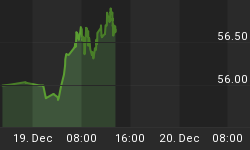This week's sentiment report highlighted company insiders and the fact that they have stepped up their selling. Some may question the wisdom of following company insiders. After all, they were buying at the October, 2007 top and have been selling for the past 8 months.
Figure 1 is a weekly chart of the S&P500 with the InsiderScore "entire market" value in the lower panel, and here we focus on the 2007 topping process. Insiders were buying to an extreme degree and I have highlighted those extremes with the vertical bars. One would expect that company insiders are buying with a longer term perspective as opposed to flipping after the next peak in prices. So this bullishness at the time of the October, 2007 top suggests that those at the controls of their companies didn't even see the troubles ahead.
Figure 1. InsiderScore/ October, 2007
Nonetheless, here we have an article by Mark Hulbert from the NY Times: "More Often Than Not, the Insiders Get It Right". Hulbert does acknowledge the 2007 gaff by the insiders, but he comes to the conclusion that they are worth following. He quotes H. Nejat Seyhun, a finance professor at the University of Michigan, who has studied the actions of corporate insiders since the 1970's. The good professor suggests that company insiders are not infallible, but they likely to know when their own company's stock is undervalued.
Hulbert also quotes from the current Vickers Weekly Insiders Report where the sell to buy ratio had fallen back to 3.52 to 1. In November, 2009, the ratio was 5.21 to 1 and back in March, 2009 at the bottom it was 0.45 to 1, which was the lowest value since 1990.
Also I want to mention this article seen recently over at Pragmatic Capitalist blog: "Insider Selling Soars to 2010 High".
Lastly, I should also mention that InsiderScore provides a market score to assess insider trading. This score just isn't a reflection of a company insider sell to buy ratio. InsiderScore's market score has some qualitative components to it such that they are assessing what type of insider is buying (i.e., CEO v. junior v.p.), their past track record with regards to timeliness, and the amount of buys or sells relative to past transactions. Unfortunately, their data only goes back to 2004, but as we have seen as well, it is not infallible. Nonetheless, I do like the qualitative aspect to it.
My take on insider selling: Insider selling is useful, but like any indicator or data point it can go through periods where it just doesn't get it right. I would rather bet with the "smart money" and figure out when they are wrong, then ignore their actions altogether. This is why I use multiple inputs or points of light to illuminate to my market analysis.
Get a daily dose of market sentiment. Subscribe to our Premium Content! Improve your market timing.















